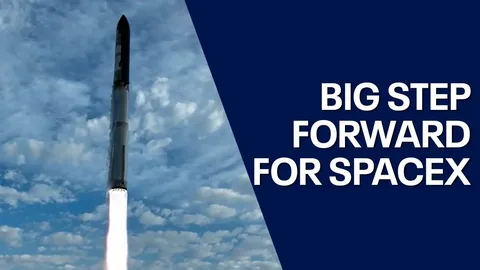The rocket, which launched from the company’s Starbase facility in southern Texas, did not survive reentry.
SpaceX launched the Starship Falcon 9 from its Starbase facility in southern Texas, on Thursday morning — the company’s latest attempt of a historic orbital test flight.
Table of Contents
The rocket took off from its launchpad in Boca Chica at about 9:25 a.m. ET, clearing several critical hurdles along its hourlong journey.
“Starship reached orbital velocity!” SpaceX founder Elon Musk wrote on X at 9:40 a.m. ET. “Congratulations @SpaceX team!!”
The rocket, however, did not survive reentry. SpaceX said it lost communication as it was reentering the Earth’s atmosphere above the Indian Ocean.
Starship is the world’s biggest rocket, measuring 30 feet wide and standing nearly 400 feet tall — or about 90 feet taller than the Statue of Liberty. It weighs more than 11 million pounds when fueled.
SpaceX designed the rocket with the goal of bringing people to Mars and the moon.
“While it’s not happening in a lab or on a test stand, this is absolutely a test,” SpaceX said in a post on X. “What we’re doing today will provide invaluable data to continue rapid development of Starship.”
This was the third launch attempt for SpaceX’s Starship, following two previous unsuccessful attempts. The last one — in November — ended in an explosion over the Gulf of Mexico just minutes into its test flight.
The rocket reached space following liftoff before communication suddenly was lost, SpaceX officials said, later confirming it had exploded over the Gulf.
“At company headquarters in Hawthorne, Calif., employees cheered as Starship soared at daybreak,” the Associated Press reported at the time. “The room grew quiet once it was clear that the spaceship had been destroyed.”
U.S. lands unmanned Odysseus spacecraft on moon
The Intuitive Machines Odysseus lunar lander is the first American spacecraft to land on the moon since Apollo 17 did so more than 50 years ago.
An unmanned, robotic lunar lander launched by a private U.S. company landed on the moon Thursday evening.
“We can confirm, without a doubt, that our equipment is on the surface of the moon,” said Stephen Altemus, CEO of Intuitive Machines, the Houston-based company that operated the Odysseus spacecraft. “Welcome to the moon.”
As it approached the surface of the moon, Odysseus lost contact with NASA, resulting in several anxious minutes for those who worked on the joint project. But after approximately 15 minutes of searching, officials confirmed that they were once again receiving signals from the spacecraft.
“A commercial lander named Odysseus, powered by a company called Intuitive Machines, launched up on a Space X rocket, carrying a bounty of NASA scientific instruments and bearing the dream of a new adventure, a new adventure in science, innovation and American leadership, well, all of that aced the landing of a lifetime,” NASA Administrator Bill Nelson said after contact had been reestablished. “Today for the first time in more than a half century, the U.S. has returned to the moon.”
Altemus had estimated that Odysseus had an 80% chance of successfully landing on the moon, citing previous failed attempts as an advantage. “We’ve stood on the shoulders of everybody who’s tried before us,” Altemus said.
It was the first American mission to land on the moon since Apollo 17 in 1972 and the first private spacecraft ever to make a soft landing there.
While it was a private mission, NASA paid Intuitive Machines $118 million to deliver six instruments to the moon. And the U.S. space agency provided streaming video of the landing.
🦅 Deployment of EagleCam
Before Odysseus reached the moon’s surface, when it was about 100 feet away, it ejected the EagleCam, a small box containing a system of cameras created by students at Embry-Riddle Aeronautical University in Daytona Beach, Fla. The EagleCam was designed to snap a series of photos — or selfies — of the spacecraft as it made its final descent toward the moon.
⏱️ ‘The longest 15 seconds you’ll ever experience’
Intuitive Machines’ Chief Technology Officer Tim Crain warned that the final moments of Odysseus’s descent may be the most suspenseful, as there would likely be a 15-second delay in transmitting data from the lunar lander back to Earth.
“I can tell you just from doing our simulations, that’s the longest 15 seconds you’ll ever experience,” he said, “as you wait for the final light to turn green to indicate that you’ve landed on the moon.”
Adding to the challenges of landing the spacecraft safely, Intuitive Machines decided to reassign Odysseus’s primary navigation sensors to NASA’s Navigation Doppler Lidar, an experimental technology, due to an apparent issue with the spacecraft’s own navigation systems, according to NASA’s livestream.
🚀 When did Odysseus launch?
The Intuitive Machines moon lander was launched from Kennedy Space Center in Cape Canaveral, Fla., last week on board a SpaceX Falcon 9 rocket.
The company said Wednesday that the 14-foot-tall spacecraft had been pulled by the moon’s gravity into a circular orbit 57 miles above the lunar surface, as planned.
On Thursday, the spacecraft dropped to within about 6 miles of the lunar surface, coasting for an hour before beginning its powered descent.
📡 What else was it carrying?
Aside from the six NASA instruments and the EagleCam, the Odysseus lander was also carrying a part for a future moon telescope and a project by American sculpture artist Jeff Koons.
🌕 Where did the spacecraft land?
The landing site is about 185 miles from the moon’s south pole.
According to a New York Times report, Odysseus was “aiming for a spot in the south polar region, a flat plain outside the Malapert A crater.” The crater is named after Charles Malapert, a 17th century Belgian astronomer.
🛰️ SpaceX:How did it land?
The spacecraft pivoted to an upright orientation roughly 1.2 miles from its landing site, according to the Times. In its last 50 feet of descent, it ceased using cameras and an altitude-measuring laser so as not to be fooled by dust particles displaced by the ship’s engines.






